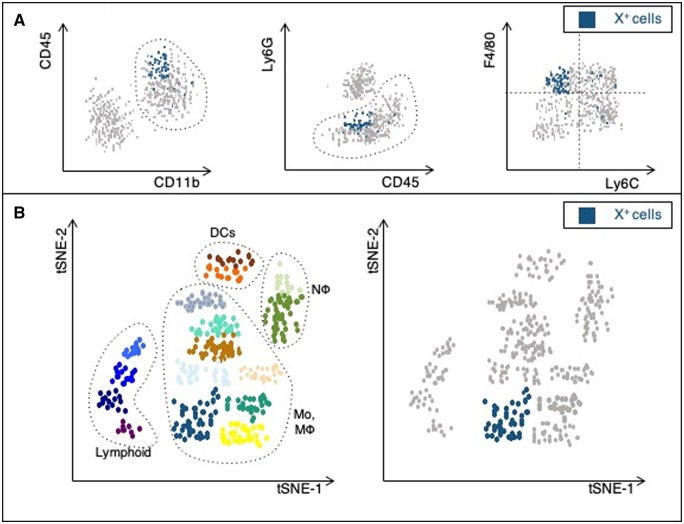Figure 3.
Advantages of high throughput techniques to examine immune cell heterogeneity. (A) Flow cytometry is widely used to immunophenotype monocytes and macrophages. A common gating strategy in mice defines these cells as CD45+CD11b+Ly-6Glow. Based on Ly-6C and F4/80 expression these cells are commonly described as classical (Ly-6ChighF4/80low) and non-classical monocytes (Ly-6ClowF4/80low), and M1 ((Ly-6ChighF4/80high) and M2 (Ly-6ClowF4/80high). Cells expressing a particular transcription factor, termed X, may not align well with the M1/M2 paradigm, Knockout of this transcription factor may preferentially deplete a particular population, such as M2 macrophages, but is neither sensitive nor specific, failing to deplete all ‘M2’ macrophages, and also depleting cells of other subsets. (B) Novel high throughput techniques allow unbiased resolution of cells into distinct populations, based on gene expression profile (scRNA-seq) or large panels of differentially expressed proteins (mass cytometry). Such methods allow identification of candidate pathways for therapeutic targeting and ensure knockout models selectively deplete the population of interest. DC, dendritic cells; Mo, monocytes; Mϕ, macrophages; Nϕ, neutrophils.

